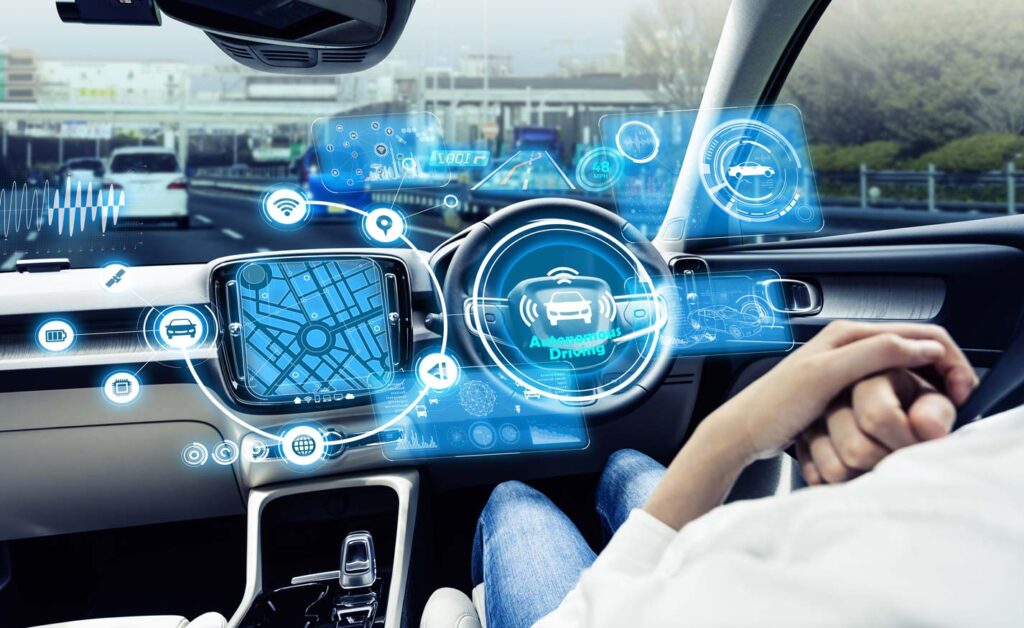Advanced Driver-Assistance Systems (ADAS) in EVs and Hybrids: Maintenance and Calibration
Advanced Driver-Assistance Systems (ADAS) are crucial in modern electric vehicles (EVs) and hybrids, enhancing safety, driving comfort, and overall vehicle performance. Proper maintenance and calibration of these systems are essential to ensure they function optimally.

This article discusses the importance of ADAS, the necessary maintenance routines, and the calibration processes required to keep these systems in top condition.
What is ADAS?
Advanced Driver-Assistance Systems (ADAS) are electronic systems in vehicles that use advanced technologies to assist drivers in driving and parking functions. These systems enhance vehicle safety and improve driving comfort by providing critical information, automating difficult or repetitive tasks, and ensuring a safer driving experience.
Importance of ADAS in EVs and Hybrids
ADAS play a significant role in:
- Enhancing Safety: Systems such as automatic emergency braking, lane departure warning, and adaptive cruise control help prevent accidents and reduce the severity of collisions.
- Improving Driving Comfort: Features like park assist, blind-spot monitoring, and traffic sign recognition make driving more comfortable and less stressful.
- Optimising Performance: ADAS optimise vehicle performance by ensuring that all systems work harmoniously, improving efficiency and reducing wear and tear on vehicle components.
Maintenance of ADAS
Regular maintenance of ADAS is crucial to ensure these systems operate correctly and safely. Here are the key maintenance tasks:
1. Regular Software Updates
- Why: Ensures the ADAS software has the latest features and improvements.
- How: Regularly check for updates from the vehicle manufacturer and install them promptly.
2. Sensor and Camera Cleaning
- Why: Dirt, debris, and weather conditions can obstruct sensors and cameras, impairing their functionality.
- How: Clean sensors and cameras regularly, using appropriate cleaning solutions and soft cloths to avoid damage.
3. Visual Inspections
- Why: Identifies any physical damage to ADAS components.
- How: Conduct visual inspections of all ADAS components, including sensors, cameras, and wiring, to ensure they are intact and properly mounted.
4. Battery Health Checks
- Why: ADAS relies on the vehicle’s battery for power, and any issues with the battery can affect system performance.
- How: Regularly check the battery’s health and ensure it is functioning optimally.
Calibration of ADAS
Calibration is essential to ensure the accuracy and reliability of ADAS. It is particularly important after repairs, replacements, or any incidents that may have impacted the vehicle’s structure. Here’s what you need to know about ADAS calibration:
When is Calibration Needed?
- After Windshield Replacement: If the vehicle’s camera is mounted on the windshield, replacing the windshield will require recalibration.
- After Collision Repairs: Any impact on the vehicle’s structure can misalign ADAS sensors and cameras, necessitating recalibration.
- Sensor or Camera Replacement: Replacing any ADAS component requires recalibration to ensure it functions correctly with the vehicle’s systems.
- Suspension Modifications: Changes to the vehicle’s suspension can affect sensor angles and require recalibration.
Calibration Process
The calibration process can be divided into two main types:
- Static Calibration:
- Performed in a Controlled Environment: Usually done in a workshop using specialised equipment.
- Involves Setting Up Targets: Targets are placed at specified distances and positions relative to the vehicle to calibrate the sensors and cameras.
- Dynamic Calibration:
- Performed on the Road: Requires driving the vehicle under specific conditions.
- Uses Real-World Scenarios: The vehicle’s systems calibrate themselves based on real-world inputs during the drive.
Steps for Calibration
- Preparation: Ensure the vehicle is on a flat surface and all ADAS components are clean and undamaged.
- Using OEM Equipment: Use original equipment manufacturer (OEM) tools and software for accurate calibration.
- Following Manufacturer Guidelines: Adhere to the specific calibration procedures recommended by the vehicle manufacturer.
Conclusion
Proper maintenance and calibration of Advanced Driver-Assistance Systems (ADAS) in EVs and hybrids are crucial for ensuring safety and driving comfort. Regular maintenance, including software updates, sensor cleaning, visual inspections, and battery checks, helps keep ADAS functioning correctly.
Calibration, whether static or dynamic, ensures the accuracy and reliability of these systems, especially after any structural changes to the vehicle. By understanding and implementing these practices, drivers can enjoy the full benefits of ADAS, enhancing their driving experience and safety on the road.
Join the Conversation
How do you maintain and calibrate the ADAS in your EV or hybrid? Share your tips and experiences below or join us on social media to discuss best practices for ADAS maintenance and calibration.
Ready for Expert Battery Care?
Ensure your German electric or hybrid vehicle receives the expert care it deserves. Contact Blueprint Autos today to learn more about our specialised services and to book a maintenance or calibration check-up.
Book now